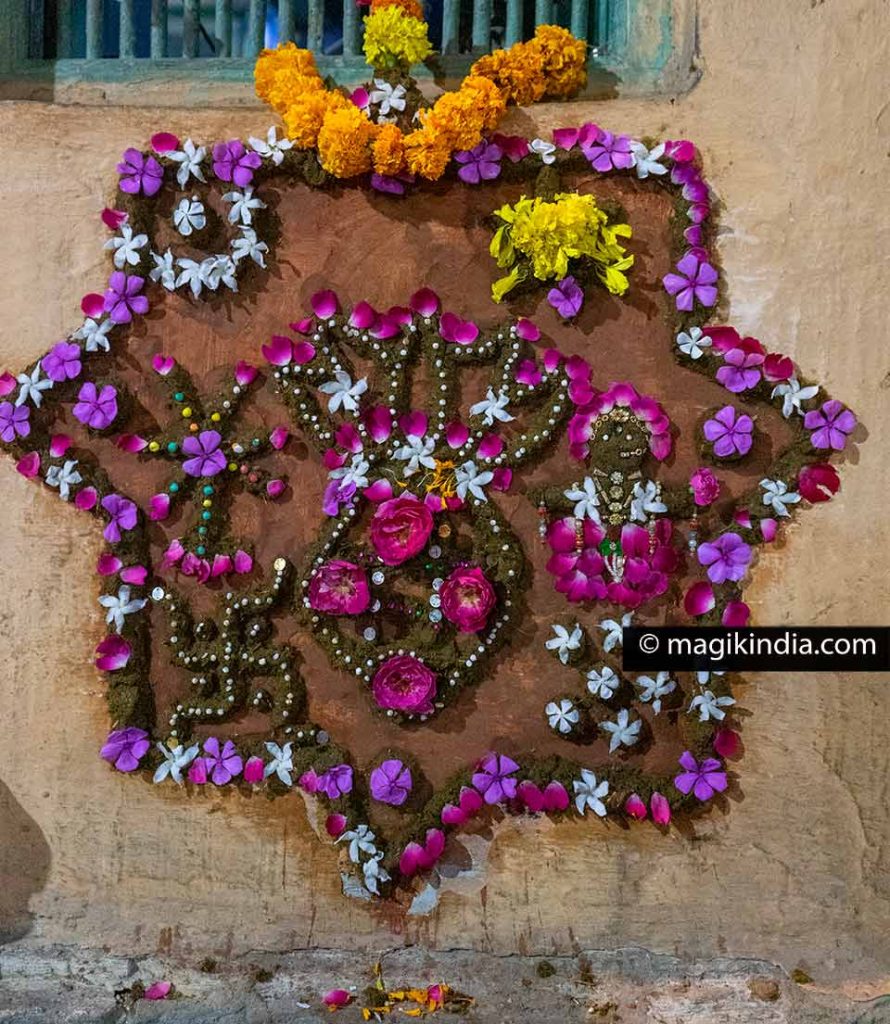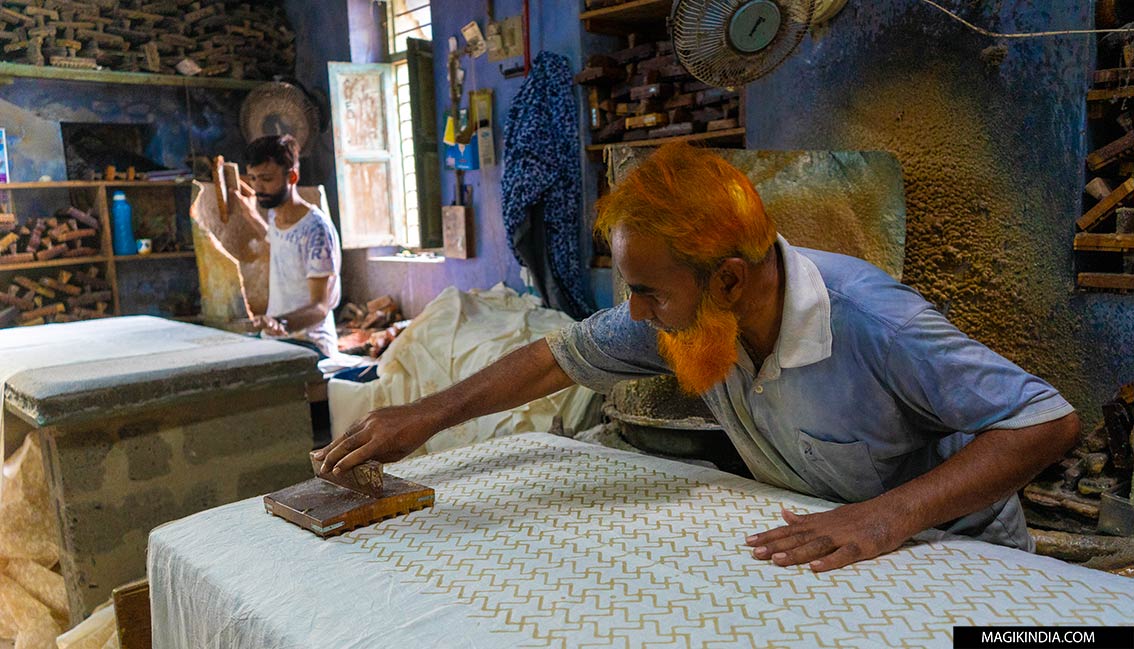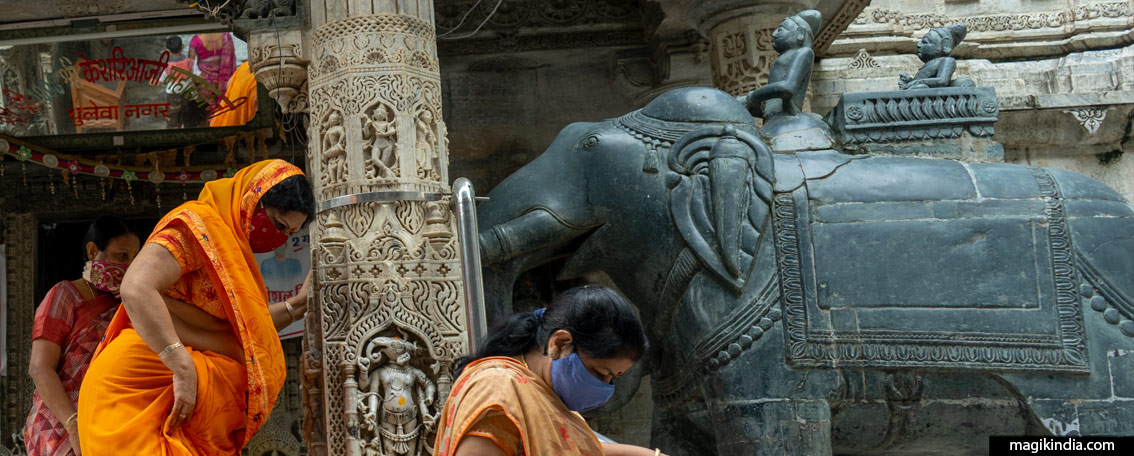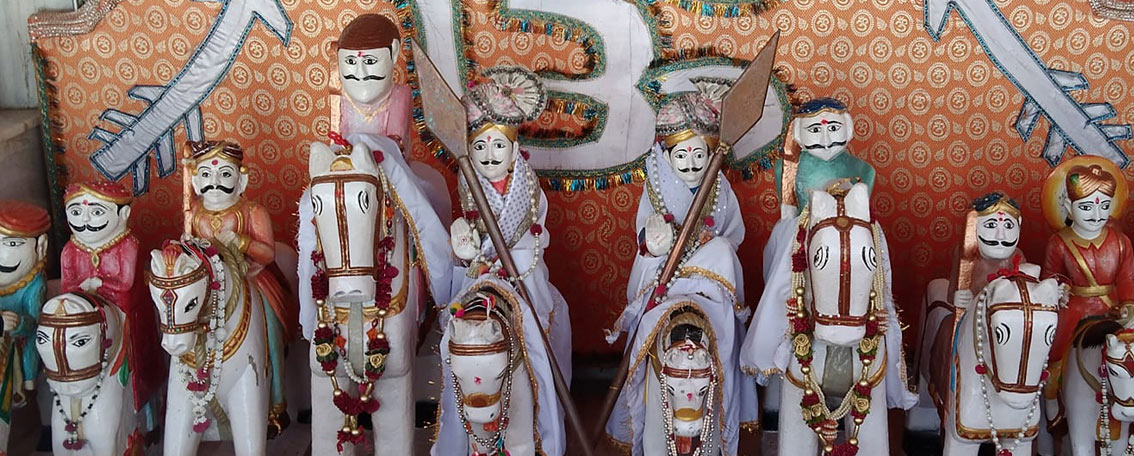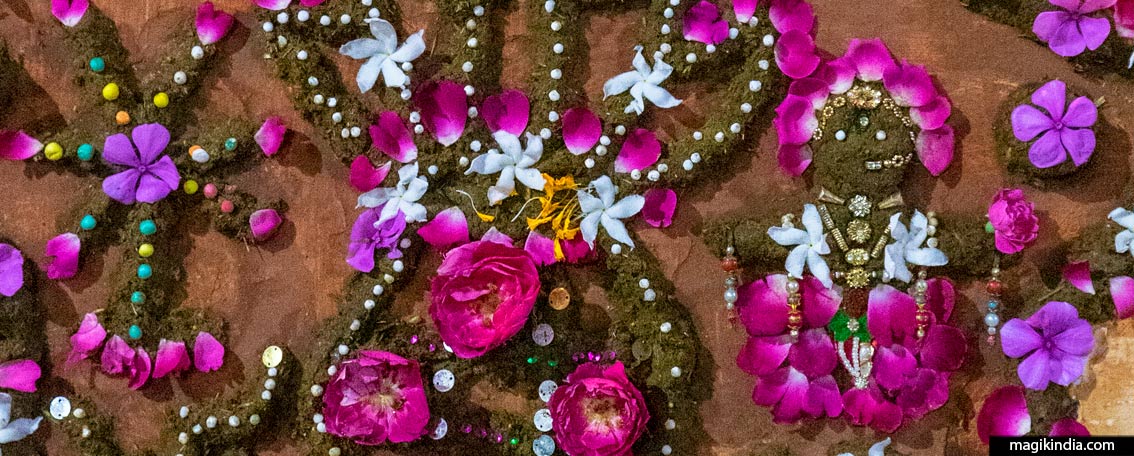
The Sandhya mural art of Udaipur
Sandhya is a form of traditional mural art that originated in the region of Braj (Uttar Pradesh). From there it spread to many other regions, especially Rajasthan, Madhya Pradesh and Punjab. Coinciding with the annual worship of the ancestors, the Sandhya is part of the “Bhakti” movement: it is a means of expressing one’s adoration for the divine and, more precisely, for the Hindu divinity Krishna. If this tradition was once very common, there are only a few places where it is still practiced. A few families in Udaipur in Rajasthan still perpetuate it.
Sandhya and the Sacred Cow
Sandhya is an artistic tradition that takes place in the evening. “Sandhya” actually means “twilight” in Hindi. This is the time when the cows return to the barn and therefore a favorable time for rituals.
In Hinduism, the cow has indeed a sacred status. She represents nurturing Mother Earth. The origin of cow worship dates back to the Vedic period (2nd millennium – 7th century BCE). It is found in rites of healing, purification and penance.

Also, the five products of the cow (panchagavya) – milk, yoghurt, butter, urine and dung – have therefore been integrated into the rituals of Hinduism.
In the Sandhya, the designs are fashioned out of cow dung. It comes in a dry form that is rehydrated with water. If this is unsavory for a Westerner, in India it is a commonplace thing.

The cow is also associated with Krishna, a central Hindu deity who is often depicted playing his flute among the cows and dancing with the Gopis (cowgirls). He grew up as a cow herder. For this reason Krishna also bears the names “Govinda” and “Gopala”, which literally means “friend and protector of cows”.

Sandhya & Radha-Krishna
Sandhya is, like Sanjhi – another form of drawing using powders and stencils – originated in the region of Braj, the homeland of Radha-Krishna. Braj or Vraj includes the cities of Vrindavan, Mathura, Gokul, Nandgaon and Barsana among others.
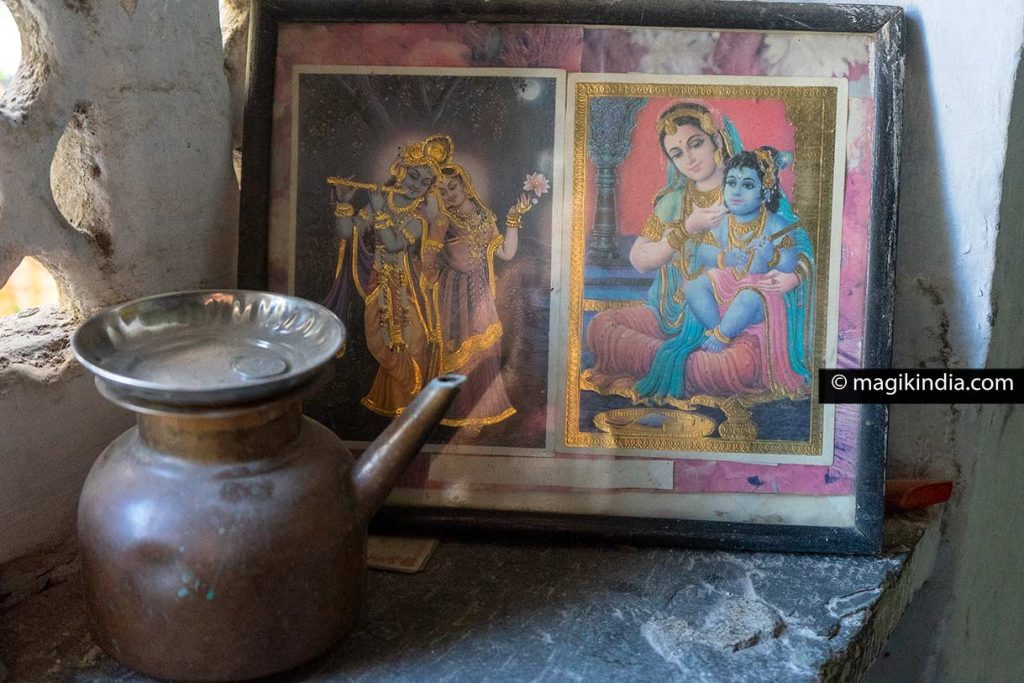
This art is intrinsically linked to the life of the god Krishna and his beloved Radha. It is said that the latter began to create motifs representing Krishna in order to evoke his presence. In return, Krishna would in turn fashion a beautiful image of Radha made up of flowers
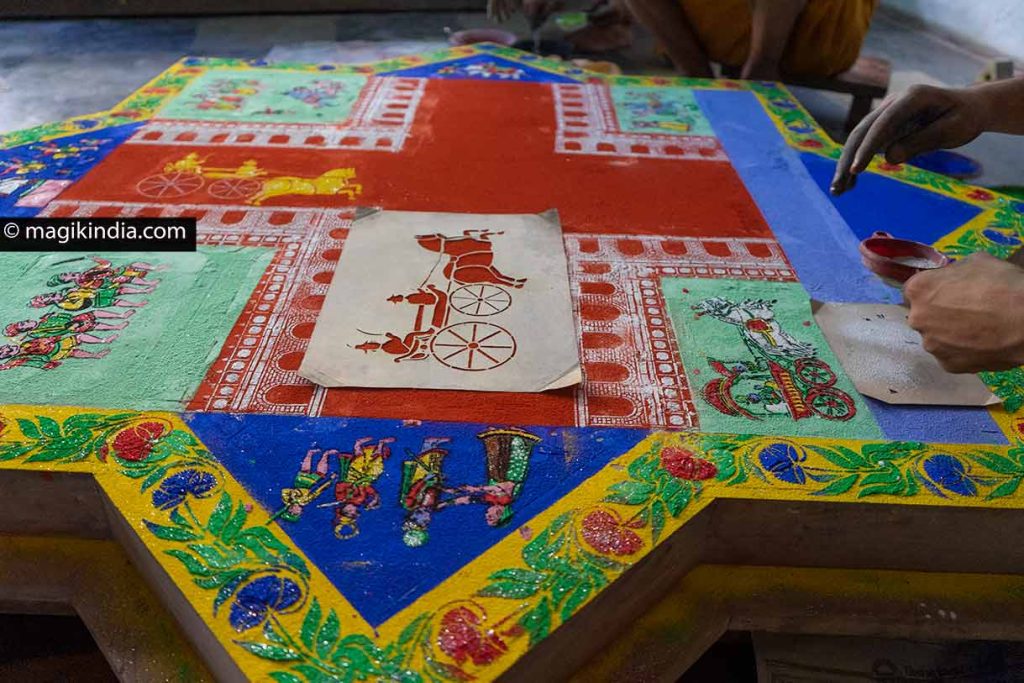
This association of Sandhya with the divine couple explains why only young unmarried women are involved in the art of Sandhya. It is a way not only to honor the unconditional love of Radha-Krishna, but also to invoke the gods so that they find a husband who would have the qualities of Krishna.
READ THE ARTICLE ABOUT SANJHIThe Sandhya Process
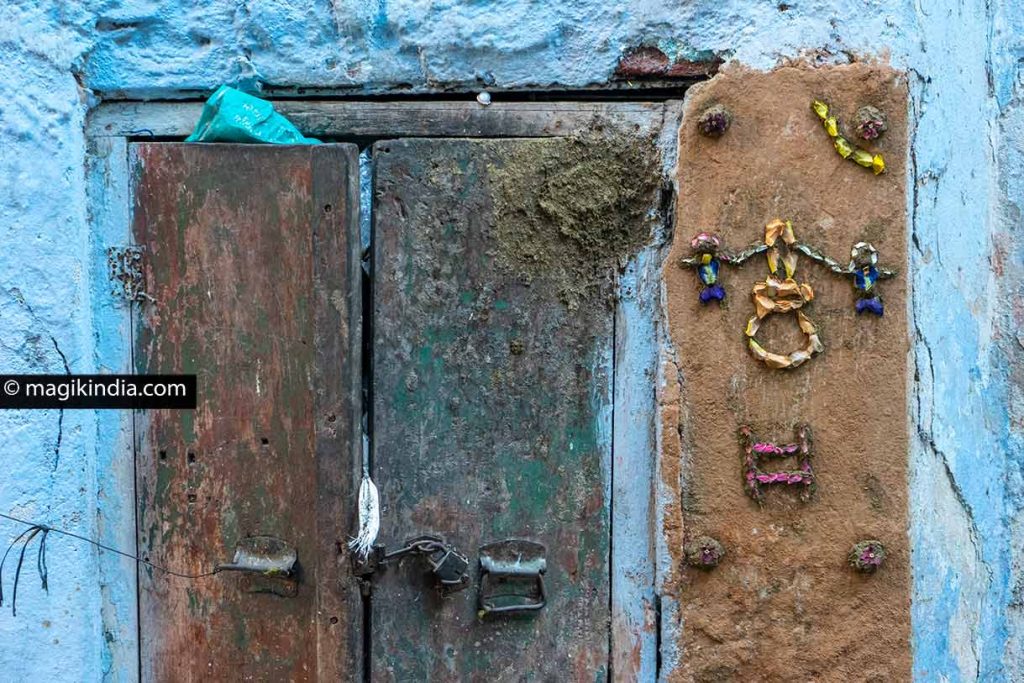
The art of Sandhya is carried out during the period of pitru-paksha (the fortnight of the ancestors); it begins on the first day of the waning moon of the month of Ashwin (Sept.-Oct.) and ends on the day of the new moon of the same month. It is a time of meditation in honor of deceased family members.
Amazingly, during this time it is normally improper to start any business or perform any ritual. There is also no Hindu festival during all this time. For some reason, however, the Sandhya seems to be an exception.
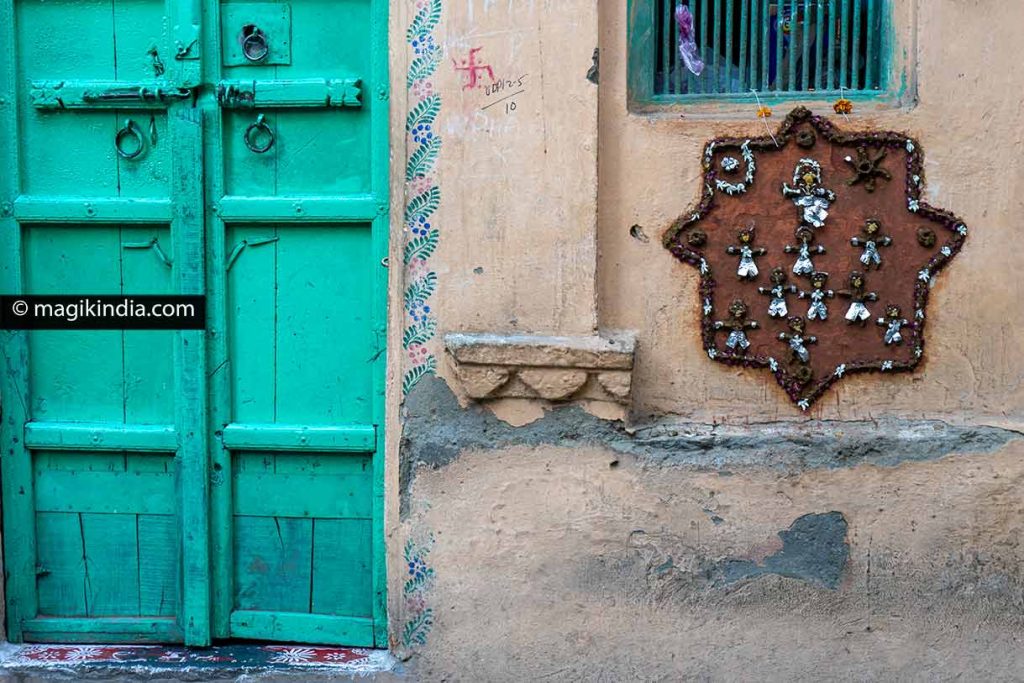
The design of the Sandhya is executed, as seen above, by young unmarried girls at the entrance to their house.
The base of the Sandhya is an octagram, a regular eight-pointed star polygon, symbolizing a lotus, which is also found in several religions and mystical traditions such as Tantrism or Buddhism. In Hinduism, this geometric figure takes the name “star of Lakshmi” or “Ashtalakshmi”, it represents the eight forms of Lakshmi, the goddess of abundance.
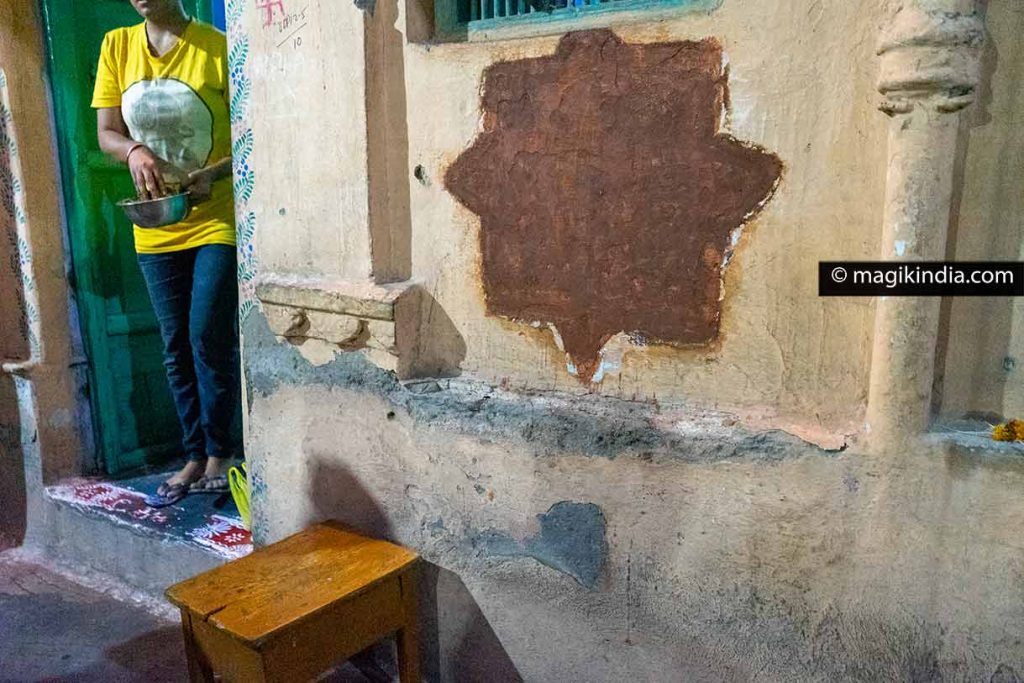
The base is covered with red clay and then the dough made from cow dung is modeled by hand to create different figures. It starts with the outlines, then the drawings take shape inside the star. After the Sandhya is completed, flower petals and sometimes silver leaf are applied to the designs while the paste is still wet.
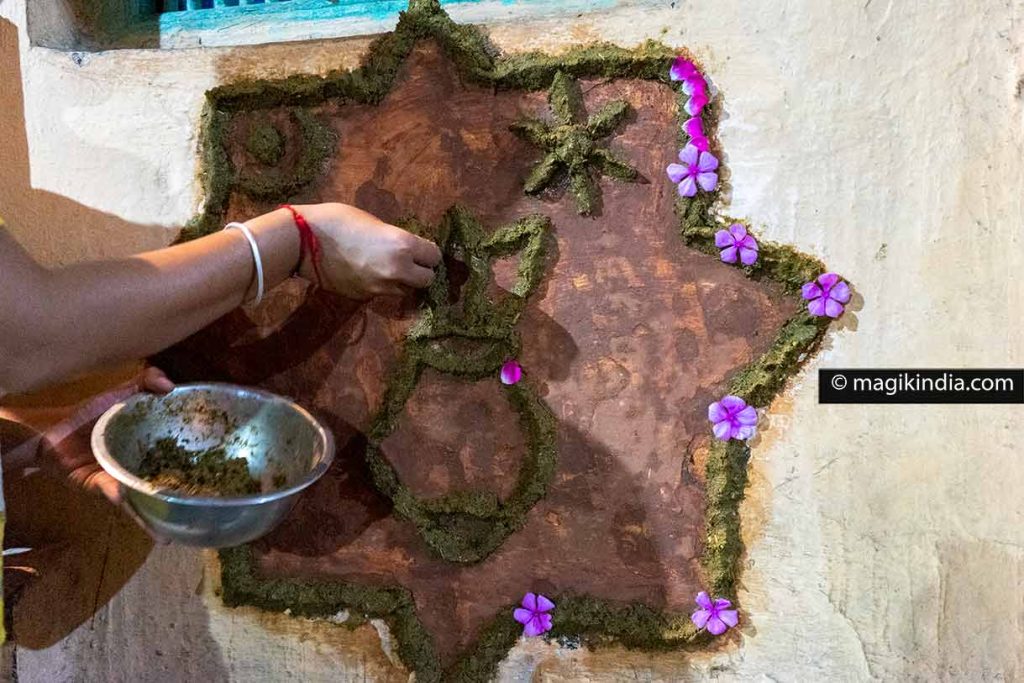
When the drawing is completed, an arati is performed in front of the Sandhya by all the female members of the family.
Every day, these relief designs are removed and, instead, new designs are created. This process is repeated every day until the end of the fortnight of Pitru-Paksha.
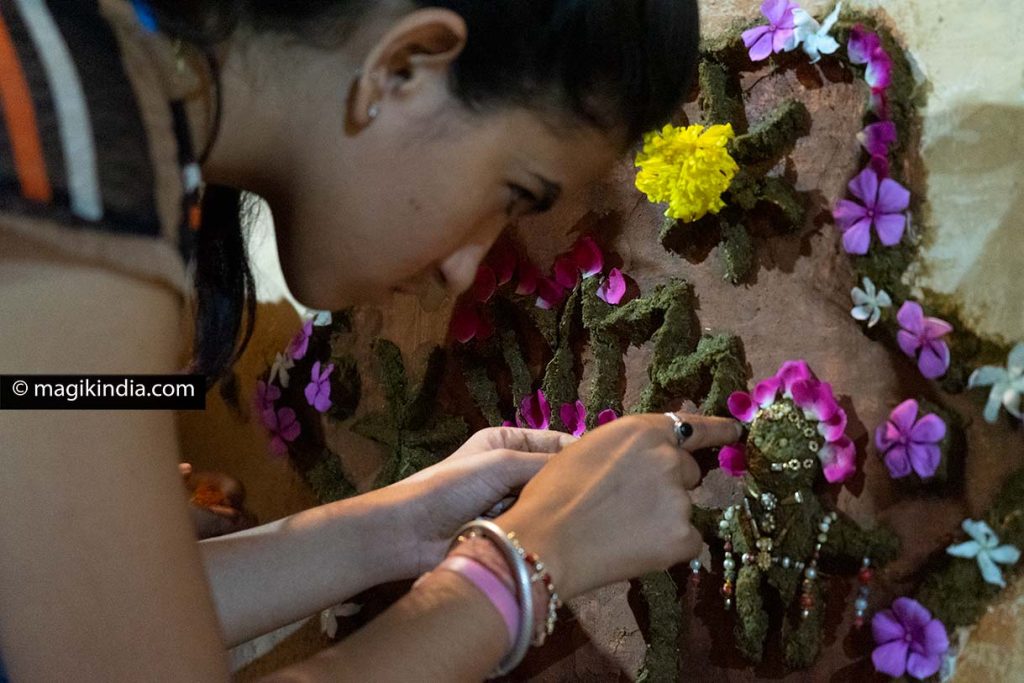
The time spent on a particular design depends on its complexity. These drawings, even simple ones, require a lot of patience. It took two hours to complete the drawing below. Just like the mandala in the Buddhist tradition, the Sandhya, because of the concentration it requires, is seen as a support for meditation.
In a society where everything has to go very quickly, this traditional art gradually disappeared.
